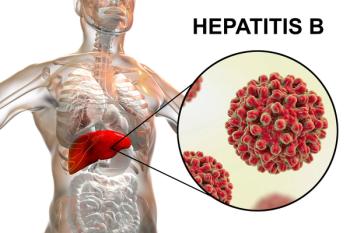
7 Things To Know About Hepatitis D
It is dependent on the hepatitis B virus, so as vaccination against hepatitis B has increased, the prevalence of hepatitis D has decreased. A new treatment drug, Gilead's Hepcludex (bulevirtide), has been approved by European drug regulators but not by the FDA.
The New England Journal of Medicine published a review about hepatitis D by
1. It is a tiny RNA virus.
The hepatitis D virus is the smallest viral pathogen that infects humans and it is similar to the single-stranded RNA viroids that infect plants. It is too small to code for replicating enzymes or envelope proteins and instead codes for a small, nonenzymatic protein, according to Asselah and Rizzetto.
2. It depends on hepatitis B.
Inside the liver,the hepatitis D virus replicates without hepatitis B virus. Otherwise, it depends on the hepatitis B virus for all the stages of its life cycle, including viral packaging, transmission and fending off the host immune system. Infection with hepatitis D happens in two ways. People can get infected simultaneously with the hepatitis B and D viruses. Alternatively, people who already have a chronic hepatitis B infection are infection secondarily with hepatitis D. The latter is sometimes referred to as “superinfection” with hepatitis D.
3. Infections are decreasing as the result of hepatitis B vaccination.
Hepatitis B vaccination, which started in the early 1990s, has had a knock-on effect on hepatitis D infection and prevalence. Among native western Europeans, for example, chronic hepatitis D infections are only seen in people with cirrhosis and advanced fibrosis. Over the past decades, the prevalence of hepatitis D in northern Africa, Saudi Arabia, Israel, Turkey, Iran, India and China has been decreasing. However, chronic hepatitis is prevalent in Romania and there are hotspots in Russia. In the United States, about 40% of people with evidence of hepatitis B infection have antibodies to the hepatitis D virus.=
4. Screening tests are available, but guidelines differ in how they should be used.
Blood tests for detecting antibodies to hepatitis D antigen are commercially available. Asselah and Rizzetto say tests should only be done in people who have tested positive for the presence of hepatitis B surface antigen. The European and Asian Pacific Associations for the Study of the Liver recommend testing for hepatitis D antibodies in everyone who is positive on a hepatitis B surface antigen test whereas the American Association for the Study of Liver Diseases says the hepatitis D testing should be restricted to people in high-risk groups, such as people who use intravenous drugs.
5. Chronic hepatitis D infection is more serious than chronic hepatitis B.
Several studies have shown that probability of a severe outcome — hepatocellular carcinoma, the most common type of liver cancer — is higher among people with chronic D infections than it is among those with chronic B infections. But Asselah and Rizzetto also point out the belief that hepatitis D almost invariably led to a bad outcome was the result of a lack of broader testing. Researchers are now documenting milder cases of hepatitis D.
6. There is no FDA-approved treatment.
Pegylated interferon alfa is used off label in the United Asselah and Rizzetto say in their review that data on the results of pegylated interferon alfa are limited.
7. Treatment drug Hepcludex may be more effective in combination with pegylated interferon alfa.
Gilead’s Hepcludex (bulevirtide) was conditionally approved by the European Medicines Agency in July 2020, but hasn’t been approved by the FDA. In fact, the FDA issued a complete response letter to Gilead last fall. According to the company, the agency was concerned about manufacturing and delivery issues, not in the methods or results of the clinical trials. Positive results for Hepcludex from a Gilead-sponsored phase 3 trial were reported in the June 23, 2023, issue of the New England Journal of Medicine. According to Asselah and Rizzetto, some evidence suggests that using Hepcludex with pegylated interferon alpha is more effective than using Hepcludex alone. Other drugs in development for treatment of hepatitis D include lonafarnib, nucleic acid polymers and pegylated interferon lambda.
Newsletter
Get the latest industry news, event updates, and more from Managed healthcare Executive.






















































